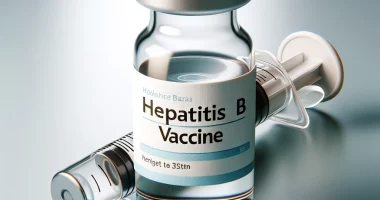Facial nerve disorder
Definition
Facial nerve disorders (Bell’s palsy, facial neuritis) are inflammatory lesions of the nerve innervating the mimic muscles of one-half of the face. As a result, weakness develops in these muscles, leading to a decrease (paresis) or complete absence (paralysis) of mimic movements and the appearance of facial asymmetry. Symptoms of facial neuritis depend on which part of the nerve is involved in the pathological process. In this regard, a distinction is made between central and peripheral facial neuritis. A typical clinical picture of facial neuritis does not cause doubts about the diagnosis. However, to exclude the secondary nature of the disease, it is necessary to conduct an instrumental examination.
General information
The facial nerve runs in a narrow bony canal, where it can be pinched (tunnel syndrome) by inflammatory processes or blood supply disorders. People with an anatomically narrow canal or peculiarities of the facial nerve structure are more prone to facial neuritis. The cause of facial neuritis may be hypothermia of the neck and ear area, especially under the influence of a draft or air conditioning.
Classification
A distinction is made between primary facial neuritis, which develops in healthy people after hypothermia (cold facial neuritis), and secondary neuritis due to other diseases. Diseases that can cause facial neuritis include herpetic infection, epidemic parotitis (“mumps”), otitis media (inflammation of the middle ear), and Melkersson-Rosenthal syndrome. Traumatic damage to the facial nerve is possible, as is damage due to cerebral circulatory disorders (ischemic or hemorrhagic stroke), tumors, or neural infections.
Symptoms of facial neuritis
Usually, facial neuritis develops gradually. In the beginning, there is pain behind the ear; facial asymmetry becomes noticeable after 1-2 days. On the side of the affected nerve, the nasolabial fold is smoothed, the corner of the mouth is lowered, and the face is tilted to the healthy side. The patient cannot close his eyelids. His eye turns upward when he tries to do so (Bell’s symptom). Weakness of mimic muscles is manifested by the inability to carry out their movements: smile, grin, frown or raise an eyebrow, pull the lips into a tube. A patient with facial nerve neuritis has wide-open eyelids on the affected side and lagophthalmos, a white strip of sclera between the iris and the lower eyelid.
There is a decrease or complete absence of taste sensation on the front part of the tongue, also innervated by the facial nerve. Dry eye or lacrimation may occur. In some cases, the symptom of “crocodile tears” develops – against the background of constant dryness of the eye, the patient has tear production during meals. On the side of facial neuritis, it may increase auditory sensitivity (hyperacusis), and ordinary sounds seem louder to the patient.
The clinical picture of neuritis may be different depending on the location of the facial nerve lesion. Thus, when the pathology of the nucleus of the facial nerve (e.g., in the stem form of poliomyelitis), patients have only weakness of the facial muscles. When the process is localized in the bridge of the brain (e.g., stem stroke), it involves not only the root of the facial nerve but the nucleus of the diverting nerve innervating the external muscle of the eye, which is manifested by a combination of paresis of facial muscles with convergent strabismus. Hearing disorders, in combination with symptoms of facial neuritis, are observed when the facial nerve is affected at the exit of the brainstem because there is a concomitant lesion of the auditory nerve. This is often seen with neurinoma in the area of the internal auditory entrance.
Suppose the pathological process is located in the bony canal of the temporal bone pyramid up to the exit point of the superficial stony nerve. In that case, mimic paralysis is combined with dry eye, impaired taste and salivation, and hyperacusis. When neuritis occurs in the area from the exit of the stony nerve to the exit of the cranial nerve, lacrimation is observed instead of dry eye. Neuritis of the facial nerve at the level of its exit from the cranial foramen to the face is manifested only by motor disorders in the facial muscles.
Facial nerve neuritis in epidemic parotitis is accompanied by symptoms of general intoxication (weakness, headache, limb pain), fever, and enlargement of salivary glands (swelling behind the ear). Facial neuritis in chronic otitis media occurs due to the spread of the infectious process from the middle ear. In such cases, paresis of mimic muscles develops against the background of shooting pain in the ear. Melkersson-Rosenthal syndrome is a hereditary disease with an attack-like course. Its clinic combines facial neuritis, characteristic folded tongue, and dense facial edema. Bilateral facial neuritis occurs in only 2% of cases. A recurrent course of neuritis is possible.
Diagnosis
The clinical picture of facial neuritis is so vivid that a neurologist can easily diagnose it. However, additional examinations (MRI or CT of the brain) are prescribed to exclude the secondary nature of neuritis, such as tumors or inflammatory processes (abscess, encephalitis).
Electroneurography, electromyography, and evoked potentials of the facial nerve are used to determine the location of the pathologic process, the degree of nerve damage, and the dynamics of its recovery during treatment.
Treatment of facial neuritis
Conservative treatment
In the initial period of facial neuritis, corticosteroids, anti-edema agents, vasodilators, and B vitamins are prescribed. Pain blockades are indicated for the treatment of pain syndrome. With secondary neuritis of the facial nerve, treatment of the underlying disease is carried out. During the first week of the disease, the affected muscles should be at rest. Massage and physical therapy for the affected muscles begin in the second week of the disease. The load is gradually increased. Anticholinesterase drugs are prescribed from the end of the second week to improve conduction.
With slow nerve recovery, drugs that improve metabolic processes in the nerve tissue are prescribed. In some cases, electroneurostimulation is possible.
Surgical treatment
Surgical treatment is indicated in cases of congenital facial neuritis or complete rupture of the facial nerve as a result of trauma. It consists of suturing the nerve or performing neurolysis. If there is no effect from conservative therapy after 8-10 months and the detection of electrophysiological evidence of nerve degeneration, it is also necessary to address the issue of surgery. Surgical treatment of facial neuritis makes sense only during the first year since later, there is irreversible atrophy of mimic muscles left without innervation, and it will be impossible to restore them.
Facial nerve grafting is performed by autotransplantation. As a rule, the graft is taken from the patient’s leg. Through it, two branches of the facial nerve from the healthy side are sewn to the muscles on the affected half of the face. In this way, the nerve impulse from the healthy facial nerve is transmitted to both sides of the face simultaneously and causes natural and symmetrical movements. After the operation, a small scar is left near the ear.
All these treatment options are available in more than 490 hospitals worldwide (https://doctor.global/results/diseases/facial-nerve-disorder). For example, Facial nerve repair can be performed in following countries for such prices:
Turkey$1,6K in 28 clinics
China$2,9K in 4 clinics
Germany$5,1K in 27 clinics
Israel$5,8K in 8 clinics
United States$8,8K in 13 clinics
Prognosis and prevention
The prognosis of facial neuritis depends on its localization and the presence of concomitant pathology (otitis media, parotitis, herpes). In 75% of cases, there is a complete recovery, but with the duration of the disease being more than three months, complete recovery of the nerve is much rarer. The most optimistic prognosis is if the facial nerve lesion occurred at its exit from the skull. Recurrent neuritis has a favorable prognosis, but each subsequent recurrence is more severe and prolonged.
Prevention of trauma and hypothermia and adequate treatment of inflammatory and infectious diseases of the ear and nasopharynx can avoid the development of facial neuritis.


